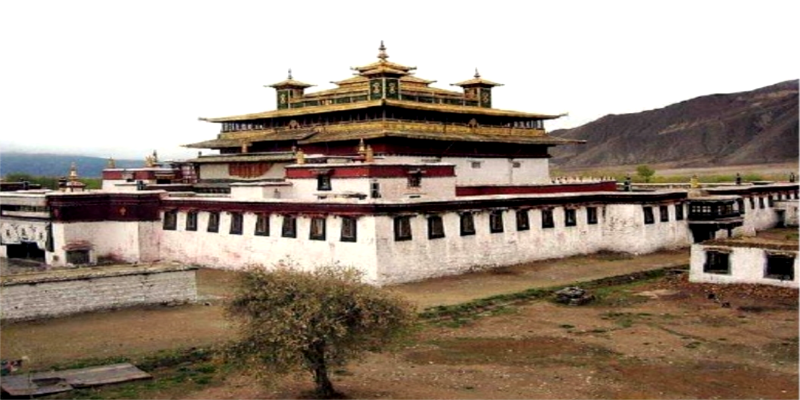Situated in central Tibet, the Royal Tombs of Chongye Valley are the final resting placef or many of the seventh to ninth century emperors of the Tibetan Empire. Among the emperors buried in the Chongye Valley is Songtsen Gampo—the first emperor of Tibet. In the paper referenced above and on-file at Academia.edu, satellite imagery is used to locate and assess the orientation of Emperor Gampo’s burial mound as well as the burial mounds for an additional nine emperors.
Analysis reveals that nine of the ten burial mounds are geomantically aligned to nearby mountains. The tenth is aligned to the Chongye River. The mountains that the burial mounds are aligned to are not insignificant. Each of the mountains that the burial mounds are aligned-to has legendary importance in the history of Tibet. Four burial mounds—including that of Songtsen Gampo, are aligned to Mount Gonpo—legendary birthplace of the Tibetan people and location for the Monkey God and Mountain Ogress myth. Two mounds are aligned to Mount Shelbrag—where the legendary first king of Tibet—i.e., Nyatri Tsenpo encountered the Tibetan people. Other mounds are oriented to other legendary mountains.
Preceding discussion of how the Royal Burial Mounds are geomantically aligned, the paper begins with an explanation of the term geomancy. In this introduction it is shown how Songtsen Gampo employed geomantic practices in the siting of his palace (the Kristse Marpo) and the Jokhang temple. Also discussed is how the Samye temple is geomantically situated—ostensibly for the purpose of subduing two of the four fearsome mountain deities of pre-Buddhist Tibet.
In summation it is proposed that geomantic connections between the Chongye burial mounds and mountains having legendary significance helped affirm the divine lineage of the emperors and provided spiritual protection for the deceased.
Author, former Research Associate, Newark Earthworks Center, Ohio State University.
Featured Image: Center Temple at Samye Monastery is just for representation

